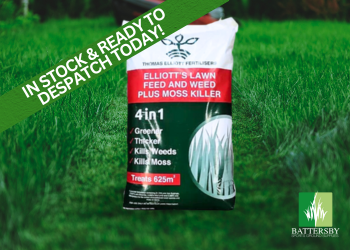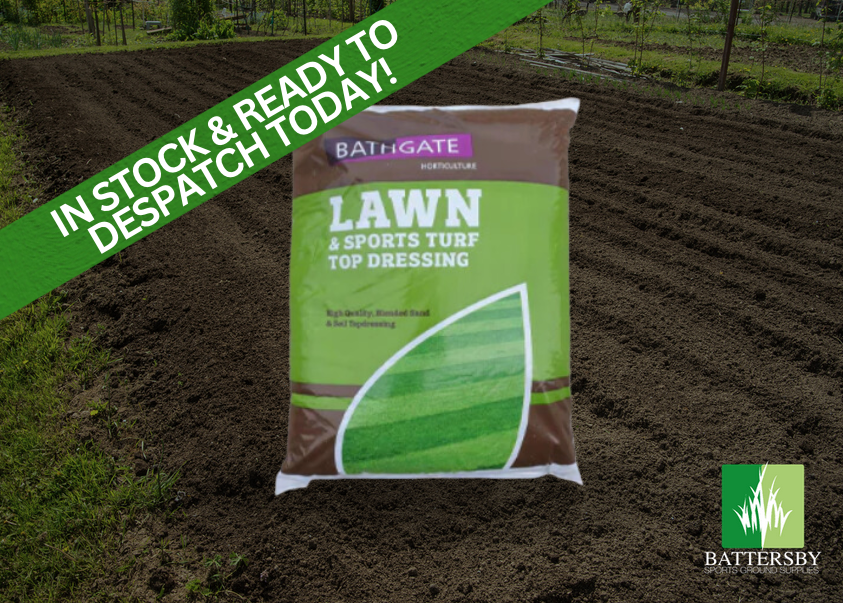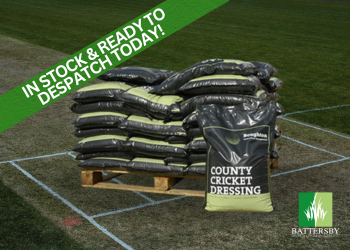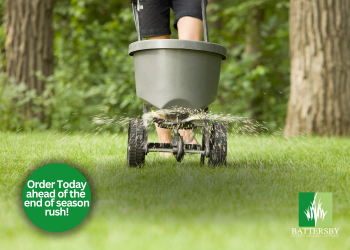
Starting out as a groundsman? Not sure where to start? Hopefully our handy month by month guide will help give you some pointers! Of course, much of the learning is ‘on the job’, so be prepared to make mistakes and learn as you go along. We have all been there…
Download Our Cricket PDF Guide Here
September/October
It seems counter-intuitive to start at what is the end of the Cricket season, but this is also the most important time for a groundsman!
Once your season ends, your preparation for the following year should start by putting the square ‘to bed’, with these simple 7 steps..
- Level off all of your used ends with the loam your square is made up of.
-
CHECK WHAT LOAM YOU NEED
There are generally 7 types of loam available (From Boughton – Club, County, Ka Loam, Kettering, Mendip, from Binders – Ongar, Surrey), so your square will be made up of one of them. Some groundsmen use loam with a higher clay content for their ends, but please only consider this if you are confident with the process you are undertaking. - Order your Loam ahead of time (aim to place the order at your seasons halfway point), and have some spare in stock so that you can top up any ends that might be ‘low’ after the renovation is complete. Anything you don’t use will be there as a starting point for next Summer!
- Shave your square to as low as possible, ideally to 2-4mm. This will help the scarification process, and get your square as clean as possible before the renovation.
- Scarify the square is as many directions as you please, followed by picking up the arisings. Scarifying helps pull out any undesirable grass, as well as cleaning out the top of your surface, stopping that dreaded ‘thatch’ layer, which can seriously affect the playability of the square. Please contact us if you need a quote for the above work to be completed
- Dependant on budget, you may consider verti draining the square at this point – effectively punching holes in the ground. This help open up the surface and encourage the existing and new material to bind together more effectively. Please contact us for a quote if your club would like this work to be completed
- Finally, seed and top dress your wickets with your selected loam (In my case, Boughton County). Seed wise this year I used a combination of Battersbys Cricket Renovation seed mix, with 3 different cultivars (varieties of grass) and Barenbrug Extreme.
2-3 DAYS LATER…
A few days after the renovation I applied the Battersbys 6-9-6 Pre-Seeder. This was the first time we had used this product at my club and we were very impressed with the results! I saw germination 6-7 days after seeding (Renovation Mid-September) and instant uptake in the wicket ends. I will be using it again!
FINISHING TOUCHES
After this I roped the square off and checked back every 2-4 days to ensure there weren’t any issues arising. So far, so good….
November/December
As the clocks roll back and the days get ever shorter, generally the temperatures take a dip and growth slows down. There are many social media platforms that show people still working on their squares well toward Christmas.
Remember that you are dealing with your own weather/area/climate, and that you mightn’t be able to get anywhere near the square! The key thing to learn is when to not do something, rather than ‘risking it’ and doing more harm than good! Always trust your knowledge of your conditions.
Dependant on when your renovation took place, your seedlings should now be well established, and the new application of loam will have ameliorated with the existing soil and settled down.
You may have some ends that are a little sparse, don’t be afraid to overseed and lightly top dress if the temperatures are still around double figures and the nights are mild – as a rule of thumb once day temperatures are below 10-12c and night time lower, then you will struggle to see growth, and might be better waiting until the spring.
If the temperatures do turn rapidly and you are struggling for grass coverage, then consider Battersbys Cold Start, which has been formulated to germinate in lower temperatures (5c or higher), which will help knit the square together, especially if your renovation took place later on into the autumn.
Once your seed is well established you can begin to think about aerating your square. Aeration (or spiking) helps create holes in the square which provide a number of benefits, including aiding drainage, improving airflow around the plant, helping promote deeper rooting and better nutrient uptake. This will help provide a stronger, more resistant grass plant to the rigours of the Cricket season.
Finally, it will be time for another application of fertiliser. There are plenty of options, including our 5-0-28 + Fe High Potash, 3-10-5 or our 6-0-12 all season fertiliser, but I have stuck down the 3-6-8+fe – this product is great at this time of year as it doesn’t promote too much grass growth but helps with the rooting of your grass plant. The Iron (Fe) in the product will help prevent moss build up, which can cause serious issues with the playability of your square.
January/February
A quieter time as reduced temperatures and slower growth mean that the square should be ticking over without the need for much maintenance.
If there are dewy mornings, then drag brushing or switching the square can help knock this off and help reduce the chance of disease.
January is ideally the last time to be spiking/verti-draining the square as with the new year arriving the new season is merely a few months away.
If there is a sufficient break in the weather then a Potassium based feed, such as the 5-0-28 + Fe High Potash should be considered. The high potash will help strengthen those roots during the long winter months as attention starts to turn to the season ahead.
Machinery should be serviced if not already done so, and preparing to purchase your stocks of Loam, Seed, Line Marker and Summer Feeds, ready for the improvement in weather should be thought about. We recommend Enhance C, a soil conditioner, for the square. This product is fantastic for reducing the appearance of those pesky worm casts, and improves microbial activity in the soil, producing a healthier sward.
Other tasks include aerating the outfield (this needs some tlc too!) and ensuring your covers are ready to go for the busy season ahead. If you are in need of a cover, then why not consider our Economy flat sheet, which will help ‘get the game on’!
March/April
As the days start to draw out, and the temperatures (finally!) warm up, the season is nearly upon us. In 2020 the weather was wet in late March, and then very cold but dry into April, but thankfully there was plenty of time to catch up with getting the ground ready for play, so don’t panic if you think you are ‘behind’.
Looking to top dress/overseed any of those ends that are looking a little low or have failed to establish. Start thinking about which wickets to use first as the season approaches. Ensure you have enough Loam in reserve to complete the top dressing, and for your repairs as the season progresses.
Along with a cut, a Spring/Summer Feed should be applied as temperatures pick up back into double figures. Granular feeds such as the 11-5-5, 12-0-9+fe and 8-0-0 are all viable options to help provide your sward with a pick me up of nitrogen and help stimulate grass growth.
Furthermore, we have a range of liquid fertilisers available for clubs who have a sprayer. If you don’t possess one, then please have a look at the range of sprayers available. Having the capability to spray will produce instant results, and can compliment a granular programme effectively.
Options on the spraying front include the 12-0-6+fe, 15-3-3 or our 7% Liquid Iron.
The Enhance C which was purchased earlier in the year can now be applied to rid yourself of those pesky casts, allowing you to start the pre-season rolling in earnest.
There is no ‘right’ or ‘wrong’ amount of pre-season rolling – a lot is to do about when the rolling is completed and the time you have available. You are looking for the soil to be at a ‘plasticine’ like consistency – too dry and you will not complete any compaction, too wet and you will smear the surface, potentially causing other issues.
Rolling, then allowing the surface to dry out before another roll, is the key, similar to preparation of a wicket.
Then the preparation of wickets begins – the busy season is here!
Although there is a lot going on at this time, don’t neglect your outfield. Spiking, scarifying and overseeding, dependant on your budget, are all important tasks that can be completed in the build up to the season. The scarification will help reduce the moss in your outfield.
Consider the Sportsground Renovation seed for any sparse outfield areas that need new growth. Our 20-10-10 slow release outfield fertiliser will help bed in any newly seeded areas, as well as improving the colour and appearance of your outfield.
Finally, don’t forget your line marking paint!
May-August
During the bulk of the season your week to week operation revolves around churning out wickets ready for play.
Don’t forget to keep your square well fed and watered dependant on the conditions. If you have the capability of verti-cutting to thin out the sward, and help with the preparation process of your wickets, then try and fit that in if you can.
If you don’t have the equipment/time, then consider using summer feeds with low phosphorus levels (the middle number on the bag), such as the 4-0-4+fe or the 12-0-9+fe. Regular favourites such as 12-6-6 and 11-5-5 will help keep that sward looking green and healthy too.
Summary
January – Feb
- Ensure machines are off to be serviced
- Purchase stocks for pre-season/start of season – Loam, Seed, Fertiliser, Line Marking Paint – have you got enough?
- Are your covers ‘game ready’? If you don’t have one, why not ask about our flat sheets, or roll on, roll off covers
- Apply an Autumn/Winter feed to give your square a boost
March – April
- If the ends/square needs top dressing/overseeding, now is the time to do so as temperatures pick up
- Apply a Spring/Summer feed to kickstart some grass growth.
- Pre-Season rolling to take place – timing is key, do this in the right conditions, not when you have time! (If conditions aren’t suitable, then leave it, you can catch up)
- Don’t forget to give your outfield some tlc – vertidraining and fertilising are both good options – please contact here for more details
May – August
- ‘In season’ – try and verti-cut your square if you can to reduce density of grass and stop the build up of a thatch layer
- Apply spring/summer feed every 4-6 weeks – use 4-0-4+fe, 8-0-0 or 12-0-9+fe to help keep Phosphorus levels stable and reduce build up of meadow grass if you cant verti-cut
- Pre-order your end of season supplies (aim for half way point of the season) ready for renovations, and take delivery early if you can – then you are ready as soon as the season ends! (and you gain some vital days when the weather is still beneficial to growth)
September – October
- Renovation time – top dress ends so they are level before renovations begin
- Scarify the square multiple ways and pick up arisings – this will help clean the square out and remove dreaded thatch layer – click here to enquire
- Verti-drain the square if budget allows – click here to enquire
- Seed and top dress
- 3-5 days later – apply pre-seed fertiliser – 6-9-6 or 7-7-7 for best results
- Check square every 2-3 days in the aftermath to ensure seed is establishing and healthy
November – December
- Square should be well established – apply Autumn/Winter feed to help with rooting (3-6-8+fe or 3-10-5)
- Cut if required
- Brush/knock off dew where possible to help ward off disease
- Overseed with Battersby Coldstart if renovation was late/low uptake of seed
Average Seeding/Fertiliser Rates – 35-50gm per sq/m
Covers 571 sq/m @35gm
Covers 400 sq/m @50gm
Covers 714 sq/m @35gm
Covers 500 sq/m @50gm






